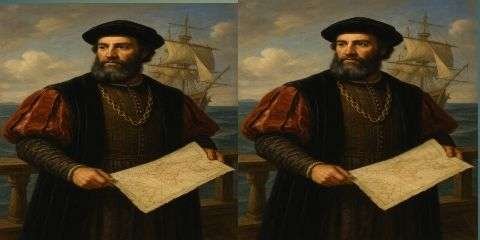The War of Independence America, also known as the American Revolutionary War (1775–1783), was one of the most defining moments in global history. It was through this conflict that the thirteen colonies of North America gained freedom from British rule and laid the foundation for a new nation — the United States of America.
For Americans, this war is remembered not only as a military struggle but also as a symbol of courage, unity, and the unshakable desire for liberty. This historic war was about much more than taxes or trade restrictions. At its heart, the War of Independence America represented the people’s demand for self-determination and democratic governance. The colonists were no longer willing to accept laws imposed by a distant empire without having a voice in decisions.
Inspired by Enlightenment ideas, they fought for natural rights — life, liberty, and the pursuit of happiness. From the Boston Tea Party to the Declaration of Independence in 1776, every step of the struggle reflected the determination of ordinary people to create an extraordinary nation.
The values that emerged from this conflict — freedom, equality, and individual rights — continue to define the United States even today. The War of Independence America not only gave birth to a free nation but also inspired other countries to rise against oppression.
At that time, few could have imagined that a group of colonies fighting for survival would later grow into a global superpower. Yet in the 21st century, America stands as a leader on the world stage, carrying forward the legacy of its revolution.
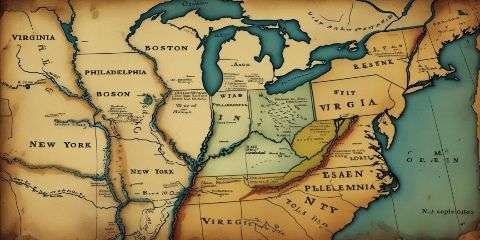
Causes of the War of Independence America
The War of Independence America did not begin suddenly; it was the result of growing tensions between the British government and the American colonies over many years. The British rulers kept introducing policies and actions that created dissatisfaction among the colonists. People began to feel that their rights and freedoms were being ignored, and slowly, a spirit of resistance developed.
What started as protests and objections against unfair treatment gradually turned into a larger movement that demanded complete independence. This section will explore the major causes behind that struggle, which ultimately transformed a set of colonies into a nation determined to govern itself.
Many reasons for America’s freedom struggle The British government was constantly taking many steps to put pressure on the American people, which caused great objection to the people and residents
1. Taxation Without Representation
One of the most important sparks of the revolution was the issue of taxation. The British government had spent huge amounts of money during earlier wars, especially the Seven Years’ War, and wanted the colonies to help pay for the expenses.
Without consulting the colonists, Britain introduced laws like the Stamp Act of 1765, which placed a tax on printed documents, and the Tea Act of 1773, which made tea cheaper but included a hidden tax. For the colonists, this was not simply about money. It was about principle.
They had no representatives in the British Parliament, yet they were being taxed by it. This gave birth to the famous slogan, “No taxation without representation!” and became a rallying cry that united the colonies against unfair rule.
2. Restrictive Trade Policies
Another major grievance was Britain’s strict control over colonial trade. Through the Navigation Acts and other regulations, the colonies were forced to export their raw materials only to Britain and could only import finished goods from there.
This meant colonists had to sell at low prices and buy at high ones, creating an economic imbalance that benefited Britain but harmed local merchants, farmers, and craftsmen. These restrictions limited opportunities for prosperity and created a growing sense of economic injustice. Over time, the frustration turned into open resentment, as colonists realized that their economic freedom was being deliberately suppressed.
3. Desire for Self-Governance
By the mid-eighteenth century, the colonies had developed strong local assemblies and a sense of their own political identity. They had different lifestyles, economies, and cultures compared to Britain. Many colonists began to feel that they were capable of governing themselves.
The idea of being ruled by a distant king, thousands of miles away across the Atlantic Ocean, no longer seemed reasonable. They wanted to create laws that reflected their needs, not the interests of Britain. This desire for self-rule was one of the deepest causes of the War of Independence America, as it was not just about resisting policies but about shaping their own destiny as a free people.
4. Influence of Enlightenment Ideas
The eighteenth century was also the age of Enlightenment, a movement of thinkers and philosophers who promoted ideas of liberty, justice, and human rights. Writers such as John Locke argued that every individual had natural rights — life, liberty, and property — and that governments existed only to protect these rights. If a government failed to do so, Locke argued, the people had the right to overthrow it.
These powerful ideas spread widely across the colonies, inspiring leaders like Thomas Jefferson, Benjamin Franklin, and others. When Jefferson wrote the Declaration of Independence, he drew directly from Enlightenment principles, transforming philosophical ideas into a political reality.
Major Events of the War
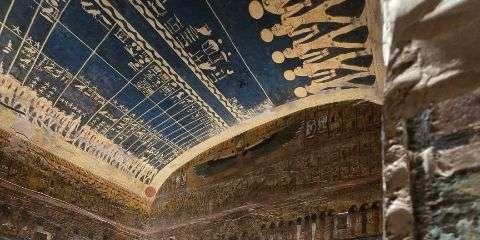
Whenever there is a war in history, there are certain turning points where the struggle for independence begins to take a new form. The US freedom struggle was no different. From the Boston Tea Party in 1773 to the battles of Lexington and Concord in 1775, every event acted like a spark that turned protest into a revolution.
A key fact is mentioned in Robert Middlekauff’s book “The Glorious Cause: The American Revolution, 1763-1789”, where it is explained how the Declaration of Independence in 1776 not only gave political meaning to the revolution but also inspired common people to see themselves as citizens of a new nation rather than subjects of a king.
Historians often say that the American Revolution cannot be understood without knowing its main causes. According to many such historical works, four major causes of the conflict stand out clearly. Because these reasons explain why common colonists decided to rebel against one of the most powerful empires in the world.
The Boston Tea Party (1773)
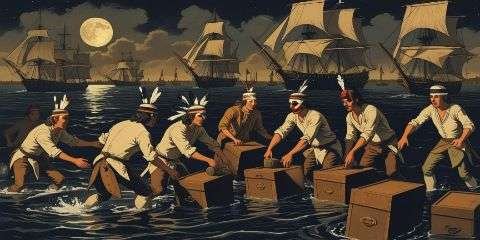
The Boston Tea Party of 1773 was one of the most dramatic and symbolic protests in the War of Independence America. It began when the British government passed the Tea Act, allowing the East India Company to sell surplus tea at reduced prices in the colonies — but with a tax still included. This act angered the colonists, who saw it as another example of “taxation without representation.
On the night of December 16, 1773, a group of men known as the Sons of Liberty decided to take direct action. Disguised as Mohawk Native Americans to hide their identities, they boarded three ships docked in Boston Harbor — the Dartmouth, Eleanor, and Beaver.
Under the leadership of Samuel Adams and John Hancock, along with activists like Paul Revere, Josiah Quincy, John Rowe, Thomas Young, George Hewes, and Francis Akeley, they dumped 342 chests of British tea into the cold waters.
According to historian Benjamin L. Carp in his book Defiance of the Patriots: The Boston Tea Party and the Making of America (2010), the protest was carefully organized and showed that colonists were willing to resist British authority at any cost.
The British government reacted with fury, passing the Coercive Acts (1774), also known as the Intolerable Acts. These laws closed the port of Boston, restricted town meetings, and allowed British troops to be quartered in private homes. Instead of weakening resistance, however, these harsh punishments only united the colonies further. The Boston Tea Party thus became not only a turning point in colonial protest but also a spark that fueled the War of Independence America.
The Battles of Lexington and Concord (1775)
The first shots of the War of Independence America were fired at the Battles of Lexington and Concord on April 19, 1775, events that later came to be known as the “shot heard ’round the world.

These battles marked the official beginning of armed conflict between the thirteen colonies and the British Empire. The tension had been building for years, and when General Thomas Gage, the British commander in Boston, received orders to seize colonial weapons stored at Concord and arrest patriot leaders Samuel Adams and John Hancock, the spark of revolution was ignited.
In the early morning hours, colonial riders like Paul Revere, William Dawes, and Dr. Samuel Prescott rode through the countryside warning militias that “the British are coming.” By dawn, about 70 colonial militia under Captain John Parker assembled at Lexington. When nearly 700 British regulars under Major John Pitcairn arrived, a shot was fired — historians still debate which side fired first. In the skirmish, eight colonists were killed, including Jonas Parker, Robert Munroe, and Isaac Muzzy.
The British troops marched on to Concord, where they faced hundreds of armed colonists at the North Bridge, commanded by leaders like Colonel James Barrett and Major Buttrick. Here, the colonists fought back, inflicting casualties on the British and forcing them into retreat. By the time the redcoats returned to Boston, over 250 British soldiers had been killed or wounded, compared to fewer than 100 colonists.
As historian David Hackett Fischer explains in his Pulitzer Prize–winning book Paul Revere’s Ride (1994), these battles showed that ordinary farmers and tradesmen were ready to take up arms against one of the most powerful armies in the world. The courage displayed at Lexington and Concord inspired more men to join the fight, turning resistance into revolution. From that day forward, the War of Independence America had truly begun.
The Declaration of Independence (1776)
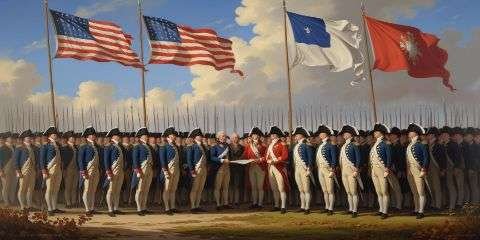
One of the most defining moments in the War of Independence America was the adoption of the Declaration of Independence on July 4, 1776. Until this point, many colonists still hoped for reconciliation with Britain, but the repeated acts of suppression and violence made independence the only solution.
The Second Continental Congress, meeting in Philadelphia at the Pennsylvania State House (today known as Independence Hall), appointed a “Committee of Five” to draft a formal statement. This committee included Thomas Jefferson, John Adams, Benjamin Franklin, Roger Sherman, and Robert R. Livingston.
The primary drafting responsibility fell on Jefferson, whose eloquent writing drew heavily from Enlightenment ideas, especially those of John Locke, who argued that governments exist to protect natural rights — life, liberty, and property. In the document, Jefferson famously wrote that “all men are created equal” and are entitled to “life, liberty, and the pursuit of happiness.
The declaration listed 27 grievances against King George III, accusing him of tyranny and justifying the colonies’ right to break away. Leaders like Richard Henry Lee, who had earlier proposed the resolution for independence, and John Hancock, who boldly signed the document in large letters, stood as symbols of defiance.
Historian Joseph J. Ellis, in his book American Creation: Triumphs and Tragedies at the Founding of the Republic (2007), notes that the Declaration was both a political and moral revolution, transforming the struggle from a fight for colonial rights into a universal demand for liberty.
Once adopted, the document was printed by John Dunlap and distributed across the colonies, rallying ordinary citizens as well as soldiers. From that moment, the War of Independence America was no longer about compromise but about creating a brand-new nation — the United States of America.
The Alliance with France (1778)
One of the most crucial turning points in the War of Independence America was the formal alliance between the American colonies and France in 1778. Until then, the colonists had fought bravely but faced constant shortages of weapons, supplies, and trained soldiers against the might of the British Empire.

The victory at the Battle of Saratoga in 1777, where American General Horatio Gates and Benedict Arnold defeated British General John Burgoyne, convinced France that the Americans had the potential to win. This success opened the door for diplomacy.
The American mission in Paris was led by Benjamin Franklin, along with diplomats Silas Deane and Arthur Lee. Franklin, with his charm and reputation as a philosopher and scientist, became very popular in French society and skillfully built support for the American cause.
On February 6, 1778, two treaties were signed — the Treaty of Amity and Commerce and the Treaty of Alliance. These agreements guaranteed mutual military support if Britain continued the war. French King Louis XVI, with his foreign minister Charles Gravier, Comte de Vergennes, officially recognized American independence.
The alliance brought massive benefits: French troops under General Rochambeau and naval forces commanded by Admiral de Grasse played decisive roles in later battles, especially Yorktown. Historian Jonathan R. Dull, in his book A Diplomatic History of the American Revolution (1985), emphasizes that without French military aid and financial loans, the revolution might not have succeeded.
From weapons and supplies to soldiers and warships, France’s support transformed the struggle from a colonial rebellion into an international conflict.
From this moment onward, the War of Independence America was no longer just a fight between Britain and its colonies — it became a global war, with France and later Spain and the Dutch Republic joining the fight against Britain. This alliance turned the dream of American independence into a real possibility.
The Battle of Yorktown (1781)

The Battle of Yorktown (1781) was the decisive event that brought the War of Independence America to a victorious close. By 1781, both the Continental Army and their French allies were looking for an opportunity to strike a decisive blow against the British.
General Charles Cornwallis, commander of the British forces in the South, established a fortified base at Yorktown, Virginia, on the Chesapeake Bay. He believed the British navy would protect him, but this decision proved fatal.
American General George Washington, together with French General Jean-Baptiste de Rochambeau, moved their combined forces — about 17,000 soldiers — southward. At the same time, French Admiral François Joseph Paul de Grasse brought a powerful fleet from the Caribbean and defeated the British navy under Admiral Thomas Graves in the Battle of the Chesapeake.
This cut off Cornwallis’s escape by sea. In September 1781, Washington and Rochambeau surrounded Yorktown. Key leaders included Alexander Hamilton, who led a daring night assault on British redoubts, and American generals like Henry Knox, Benjamin Lincoln, and Marquis de Lafayette, who played critical roles in the siege.
The French contribution was equally significant, with officers like Comte de Saint-Simon coordinating attacks. Trapped with dwindling supplies and no reinforcements, Cornwallis surrendered on October 19, 1781, handing over more than 7,000 troops.
As historian John Ferling explains in his book Almost a Miracle: The American Victory in the War of Independence (2007), Yorktown was not just a military victory but a political triumph. It convinced the British public and Parliament that the war was unwinnable. Negotiations soon followed, leading to the Treaty of Paris (1783), where Britain officially recognized the independence of the United States. The Battle of Yorktown thus marked the final chapter of the War of Independence America, securing freedom for a new nation.
Role of George Washington
One of the most iconic figures of the War of Independence America was George Washington, the commander-in-chief of the Continental Army. Despite facing shortages of supplies, lack of trained soldiers, and repeated defeats, Washington’s leadership and determination kept the revolutionary spirit alive.
His famous crossing of the Delaware River in 1776 and the surprise victory at the Battle of Trenton inspired hope when morale was low. Washington’s ability to unite his men and maintain discipline was critical to America’s success. Later, he became the first President of the United States, earning the title “Father of His Country.
Conclusion

The War of Independence America was not only a military conflict but a profound political and social revolution. It united thirteen diverse colonies, defeated one of the world’s strongest empires, and gave birth to a new nation founded on freedom and democracy.
From George Washington’s leadership to the contributions of women, African-Americans, and Native Americans, this war was a collective effort that shaped the destiny of America. Its legacy endures in every Independence Day celebration, in the U.S. Constitution, and in the very spirit of the American people.
The War of Independence America continues to symbolize the eternal struggle for liberty and remains a beacon of hope for oppressed people around the world.
Frequently Asked Questions (FAQ)
Q1. What was the War of Independence America?
The War of Independence America, also known as the American Revolutionary War (1775–1783), was the conflict in which the thirteen American colonies fought against British rule and established the United States of America.
Q2. Why did the War of Independence America begin?
It began mainly because of issues like “taxation without representation,” restrictive trade policies, the desire for self‑governance, and the influence of Enlightenment ideas about liberty and natural rights.
Q3. Who were some of the key leaders of the American side?
Important American leaders included George Washington, Thomas Jefferson, John Adams, Benjamin Franklin, Alexander Hamilton, Samuel Adams, and Patrick Henry.
Q4. Which foreign country helped the American colonies during the war?
France was the main ally of the colonies. Under King Louis XVI, France provided military aid, money, weapons, and soldiers. French commanders like General Rochambeau and Admiral de Grasse played crucial roles in victory.
Q5. What was the importance of the Declaration of Independence (1776)?
The Declaration formally announced the colonies’ separation from Britain. Written by Thomas Jefferson, it proclaimed that all men are created equal and entitled to life, liberty, and the pursuit of happiness.
Q6. How did the War of Independence America end?
The war ended with the British defeat at the Battle of Yorktown in 1781 and the signing of the Treaty of Paris in 1783, where Britain officially recognized U.S. independence.
Q7. What is the legacy of the War of Independence America today?
Its legacy is the foundation of modern American democracy, values of freedom and equality, and inspiration for other nations to fight against oppression. Independence Day (July 4) is celebrated every year to honor this achievement.

